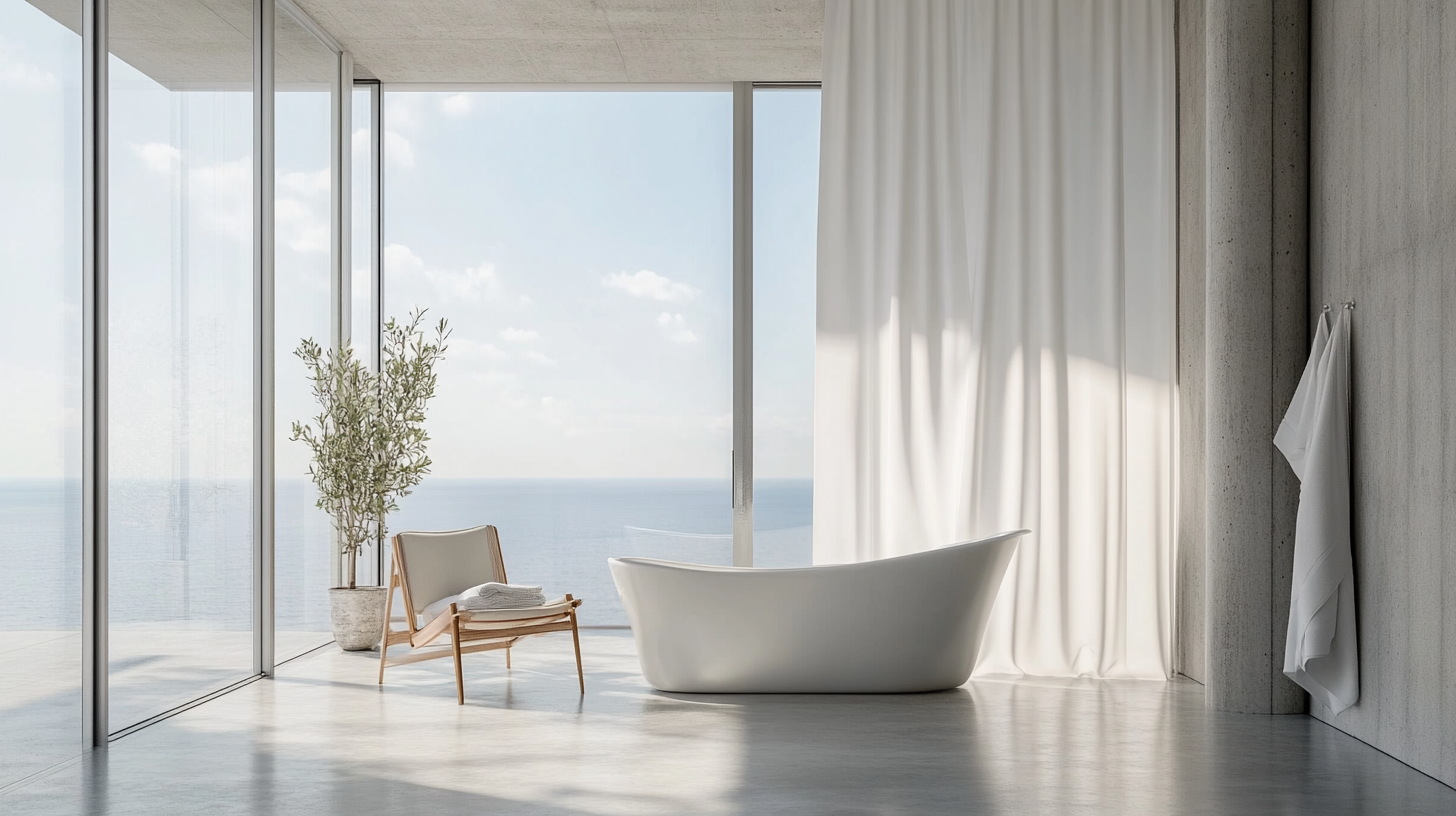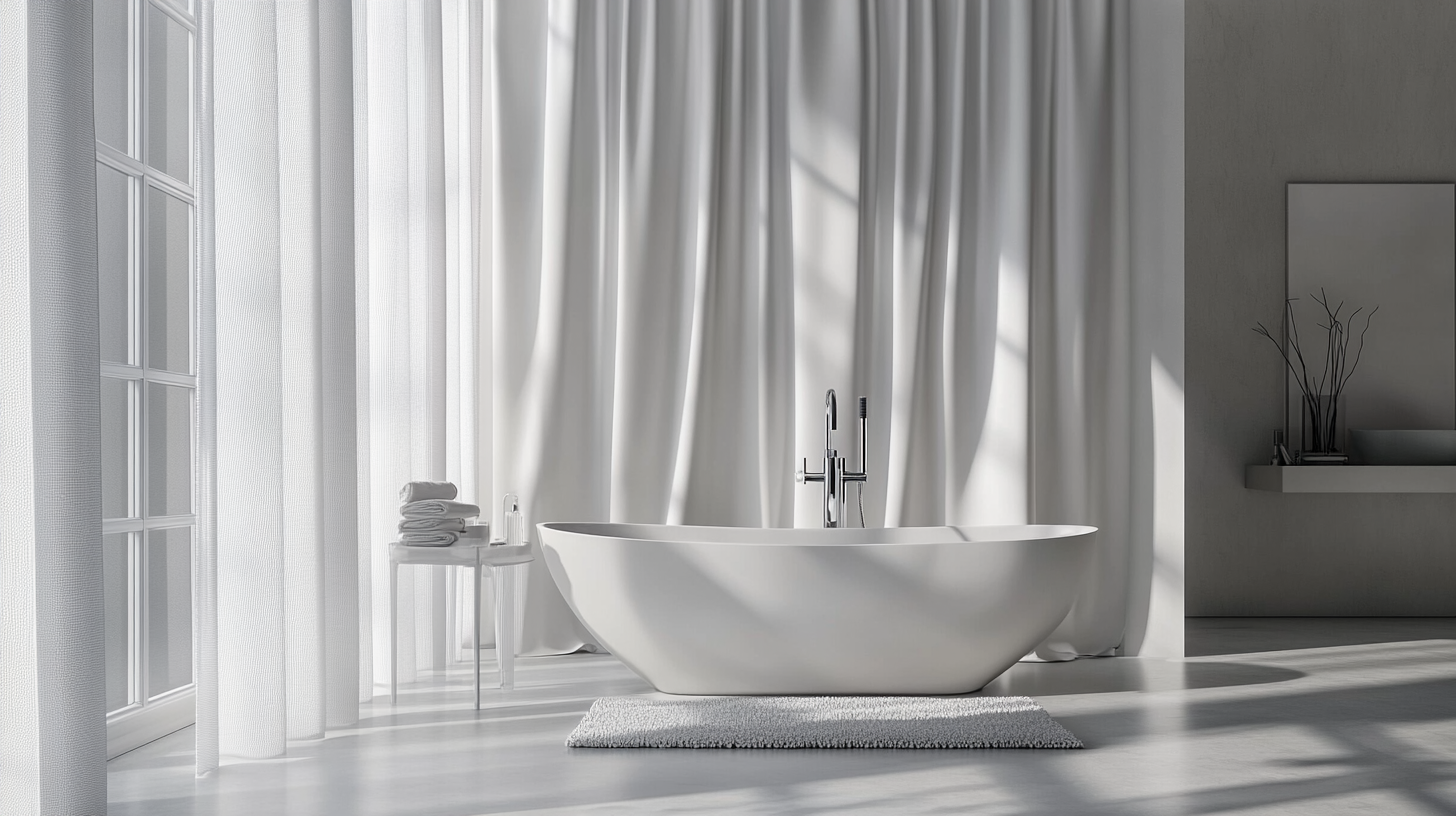In the realm of bathroom décor, few elements combine functionality and style as effectively as shower curtains and liners. According to industry reports, the global market for bath textiles—including shower curtains and liners—is projected to reach over $10 billion by 2025, driven by an increasing consumer focus on home aesthetics and hygiene. As more homeowners invest in their bathrooms, the demand for unique features in shower curtains and liners, such as water-resistant materials, eco-friendly options, and customizable designs, continues to soar. Whether you’re drawn to modern minimalism, vibrant patterns, or elegant textures, selecting the right shower curtain and liner can transform your bathroom into a stylish sanctuary. This blog will explore the best options available, highlighting their unique features and applications to suit every bathroom style, ensuring that both design enthusiasts and practical homeowners can find their perfect match.

 When selecting shower curtains and liners, the choice of material plays a critical role in both durability and functionality. Popular materials include polyester, vinyl, and fabric blends, each offering distinct advantages that cater to different bathroom styles. According to the "Bathroom Accessories Market Analysis" report by Grand View Research, the global shower curtain market is projected to reach $3.1 billion by 2025, underscoring the importance of quality materials in enhancing user experience. Polyester, for instance, is known for its water-resistant properties and ease of cleaning, making it an ideal choice for households seeking both style and practicality.
When selecting shower curtains and liners, the choice of material plays a critical role in both durability and functionality. Popular materials include polyester, vinyl, and fabric blends, each offering distinct advantages that cater to different bathroom styles. According to the "Bathroom Accessories Market Analysis" report by Grand View Research, the global shower curtain market is projected to reach $3.1 billion by 2025, underscoring the importance of quality materials in enhancing user experience. Polyester, for instance, is known for its water-resistant properties and ease of cleaning, making it an ideal choice for households seeking both style and practicality.
Durability factors are also essential in determining the lifespan of shower curtains and liners. A 2020 study by IBISWorld found that waterproof vinyl liners tend to last longer than their fabric counterparts due to their moisture-resisting capabilities. However, high-quality fabric curtains, especially those treated with mildew-resistant finishes, offer an appealing aesthetic without compromising longevity. Homeowners should weigh these characteristics carefully to ensure their shower curtains not only match their bathroom decor but also withstand daily wear and tear, ultimately providing a sustainable and stylish solution.
When selecting the best shower curtains and liners, understanding the key features of waterproof technology and mildew resistance is crucial for creating a functional and stylish bathroom environment. According to a recent report by the American Cleaning Institute, over 80% of households consider mildew resistance a top priority when purchasing bathroom textiles. This is largely due to the health implications associated with mold growth, which can contribute to respiratory issues and allergens in the home.
The latest advancements in shower liner technology have led to the development of materials that not only repel water but also inhibit the growth of mildew and mold. For example, liners made from polyethylene vinyl acetate (EVA) are both chlorine-free and 100% waterproof, making them an eco-friendly option. A study published in the Journal of Environmental Health found that using these high-quality liners can reduce mold contamination by up to 70% compared to traditional vinyl liners. These features not only enhance user experience but also extend the lifespan of your bathroom textiles, making them a worthwhile investment for any decor style.
The aesthetic appeal of a bathroom can be significantly transformed with the right shower curtain design. Beyond mere functionality, shower curtains serve as pivotal decorative elements that can set the tone for the entire space. From bold patterns to subtle pastels, choosing the right design can create a striking focal point or seamlessly blend with the overall decor. For example, a vintage floral print can bring a touch of nostalgia to a traditional bathroom, while geometric designs might complement a more modern aesthetic.
In addition to color and pattern, the texture of shower curtains adds another layer of visual interest. Options such as sheer, embroidered, or fabric curtains can enhance the overall ambiance, providing depth and richness. A well-chosen curtain not only contributes to the visual dynamics but also reflects the homeowner's personality and style preferences. By thoughtfully selecting shower curtain designs that harmonize with bathroom elements such as tiles, fixtures, and accessories, one can elevate the look of any bathroom, making it a true reflection of personal taste.
| Feature | Description | Material | Design Style | Color Options | Applications |
|---|---|---|---|---|---|
| Waterproofing | Keeps water in the shower area | Vinyl, polyester | Modern, minimalist | Clear, white, blue | Residential, commercial |
| Mold Resistance | Resistant to mold and mildew growth | Microfiber, treated fabric | Traditional, decorative | Pastels, bright colors | Luxury homes, hotels |
| Easy Maintenance | Machine washable and easy to clean | Cotton, PEVA | Contemporary, bohemian | Neutral tones, geometric patterns | Family bathrooms, rentals |
| Customization | Available in custom sizes and prints | Polyester, canvas | Eclectic, artistic | Custom prints, various shades | Personalized spaces, themed decor |
| Eco-friendly Options | Made from sustainable materials | Biodegradable, recycled materials | Natural, organic | Earth tones, subtle patterns | Eco-conscious homes, sustainable living |
When it comes to selecting shower curtains and liners, understanding the right size is crucial for both aesthetics and functionality. According to industry standards, the most common shower curtain size is 72 inches by 72 inches, which fits the majority of standard bathtubs and shower stalls. Data from the Home Improvement Research Institute highlights that approximately 80% of bathrooms in American homes use this standard size, making it essential for consumers to consider their specific bathroom dimensions when selecting a curtain.
Additionally, shower liners come in various sizes, often mirroring the dimensions of the curtains for a perfect match. It's important to note that while many liners are also 72 inches by 72 inches, some manufacturers offer extra-long options measuring 72 inches by 84 inches to accommodate taller showers. A report from the American Home Furnishings Alliance indicates that choosing the correct size not only enhances the overall look of the bathroom but also prevents water leakage, contributing to better moisture control and reducing the risk of mold growth in wet areas. Therefore, accurate measurements prior to purchase ensure both style and practicality in any bathroom design.

To keep your shower curtain and liner in top shape, regular maintenance is key. Start by washing your fabric curtain every few weeks. Use a gentle cycle with mild detergent to prevent fading and wear. For vinyl or plastic liners, a quick scrub with a mixture of vinegar and water can help eliminate mold and mildew, which can accumulate over time due to the damp environment.
Another essential tip is to properly dry your shower curtain and liner after each use. Make it a habit to pull the curtain fully to the side to allow air circulation, minimizing moisture buildup. You can also periodically check for any signs of damage, such as tears or mold spots, and address these issues promptly to extend the lifespan of your bathroom essentials. By implementing these simple maintenance tips, you can enjoy a fresh and functional shower setup for years to come.
